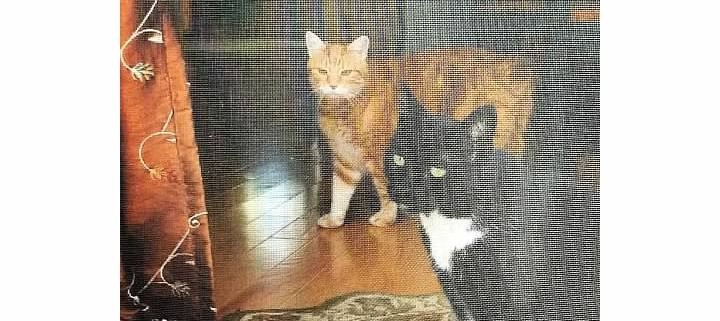Vaccination for Cats
Vaccination has been a hot topic in human health recently and the debate is not new to the veterinary world either. Some pet parents are concerned that their pets will experience dangerous side effects from the vaccines or that the vaccines may carry ingredients that will make their cats sick. While there has been some evidence that the carriers in vaccines can cause tumors at the injection site, the benefits of vaccination far outweigh the risks. Vaccinations protect your cat from dangerous, painful and often deadly diseases. When the cat’s body is introduced to a small amount of dead or weakened antigen, it trains the cat’s body to produce antibodies. These antibodies are specific to various diseases so if the cat comes in contact with that type of antigen again, it is prepared to fight it off, giving your cat its best chance for optimal health.
The traditional feline vaccine that most veterinarians recommend is a “core” mixed vaccine that protects cats from distemper (panleukopenia), viral rhinotracheitis, and calicivirus. All cats are legally required to be vaccinated for rabies, since it is a dangerous disease that affects people as well. Additional optional vaccines include feline leukemia (FeLV), feline infectious peritonitis (FIP), bordetella and chlamydophila, but they are typically only recommended for cats that go outdoors or that live in highly susceptible areas.
Distemper / Panleukopenia
Highly contagious and deadly, the panleukopenia virus has fortunately been controlled very well by responsible vaccination practices. This virus causes lethargy, vomiting, diarrhea, fever and becomes fatal very quickly.
Rhinotracheitis
One of the most common upper respiratory viruses in cats is the herpes virus, which is caused by rhinotracheitis. Once a cat picks up this virus it is very difficult to ever get rid of it. Symptoms include sneezing, runny eyes and nose, and can be very dangerous for young kittens.
Calicivirus
Calicivirus is very similar to rhinotracheitis and herpes in cats. It is another highly contagious respiratory infection.
Rabies
Rabies is a virus that can be transmitted to any mammal, including humans. A bite from an infected animal deposits the virus into the bloodstream. The brain and central nervous system are the main areas affected by rabies. Symptoms include confusion, disorientation, erratic behavior (like nocturnal animals wondering about in the daytime), headache, fever, discomfort and production of frothy drool. While the disease can potentially lay dormant for many months, once these advanced symptoms occur the animal typically only lives for a few days.
Feline Leukemia
Cats that go outdoors are at the highest risk of contracting FeLV because cats tend to scuffle and the disease is commonly passed by a bite from an infected cat. If a cat does get FeLV it can cause blood disorders, immune deficiency and is a leading cause of feline cancer. Symptoms include decreased appetite, lusterless coat condition, enlarged lymph nodes, fever, pale gums, persistent infections and diarrhea.
Chlamydophila
This bacterial infection causes conjunctivitis in the eyes and respiratory symptoms.
Feline Infectious Peritonitis (FIP)
A type of coronavirus, FIP is spread through feces and saliva. It tends to be more common in areas where there are many cats housed together such as shelters and is almost always fatal. FIP can wipe out an entire population of shelter cats and should be managed very carefully.
Bordetella
This bacterial respiratory infection is best known for causing a persistent cough. The bacteria is airborne and vaccines are recommended for cats that spend time around other cats such as in boarding facilities.
Kittens receive antibodies from their mother’s milk which protect them as babies. As the kittens grow and they stop nursing, these maternal antibodies will wear off. It is important to wait until the kittens are around 6-7 weeks old before you give their first core vaccines, otherwise the maternal antibodies will address the vaccine antigen and the kitten’s immune system will not learn to develop their own antibodies. Boosters should be given at 10 weeks and then rabies vaccines are given at 12 weeks. It is a good idea to booster the core vaccines again at 13 – 16 weeks. Feline Leukemia vaccines can be given at 13 weeks and boostered 16 – 19 weeks. Adult cats typically only need to receive booster vaccines every 3 years, but rabies laws vary from state to state. Talk to your vet about their recommendations for vaccine schedules because every vet has their own recommendations based on the prevalence of disease in your area. In some cases, senior cats who have received vaccines their whole life may have developed a strong immune system and vaccine schedules can be backed off in their geriatric years.
Studies
Humoral immune response in dogs and cats vaccinated against rabies in southeastern Brazil.
The incidence of feline injection site sarcomas in the United Kingdom.


